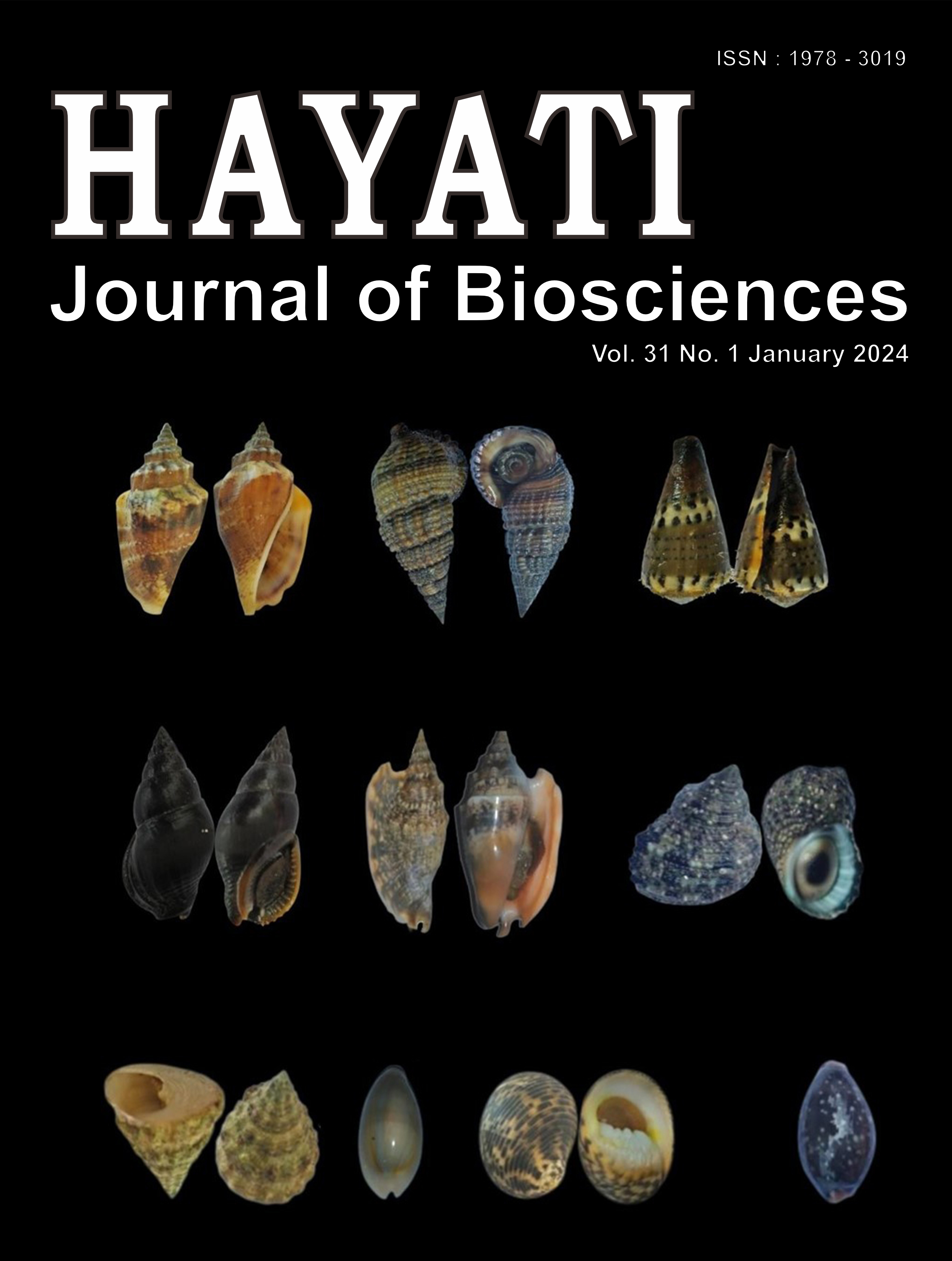Exogenous Zinc Application and Generative Traits of Three Local Shallot Varieties
Abstract
Increasing shallot (Allium ascalonicum L.) production can be done by application of botanical or true shallot seeds (TSS). Meanwhile, it is well understood that botanical seeds are difficult to produce due to shallots' low flowering capacity. This study aimed to evaluate the generative traits of three local shallot varieties affected by various doses of zinc (Zn). This study was structured using a split-plot design, where the main plots were varieties (Lokana, Rubaru, and Ambassador 3 Agrihorti). In addition, the sub-plot treatment, the dose of zinc (0, 0.5, 1, and 1.5 kg ha-1), was repeated three times. There is an effect of the main factor (variety) where Rubaru and Ambassador 3 Agrihorti show the fastest umbel emergence. In addition, our data show the interaction effects on the age of sheat breaking, flower blooming (DAP), morphology traits of generative organs, and leaf traits. In detail, Lokana with a Zn dose of 1.5 ha-1 shows the best results on the length and diameter of the umbel stalk; Rubaru with Zn 1 kg ha-1 on the age of broken sheath and chlorophyll index; and the Ambassador 3 Agrihorti with Zn 0.5 kg ha-1 on the number of flowers. On the one hand, it can be concluded that each variety responded differently to the dose of Zn. Concerning seed production, on the other hand, the Ambassador 3 Agrihorti with Zn 0.5 kg ha-1 has better potential to be developed for TSS, as seen from the number of flowers per umbel, a higher percentage of flowering plants and a relatively fast flowering time than other varieties.
Downloads
Copyright (c) 2023 Remi Widana Putri, Elkawakib Syam'un, Fachirah Ulfa

This work is licensed under a Creative Commons Attribution-NonCommercial 4.0 International License.
HAYATI J Biosci is an open access journal and the article's license is CC-BY-NC. This license lets others distribute, remix, tweak, and build upon author's work, as long as they credit the original creation. Authors retain copyright and grant the journal/publisher non exclusive publishing rights with the work simultaneously licensed under a https://creativecommons.org/

























.png) IPB University
IPB University Department of Biology
Department of Biology The Indonesian Biological Society
The Indonesian Biological Society 

